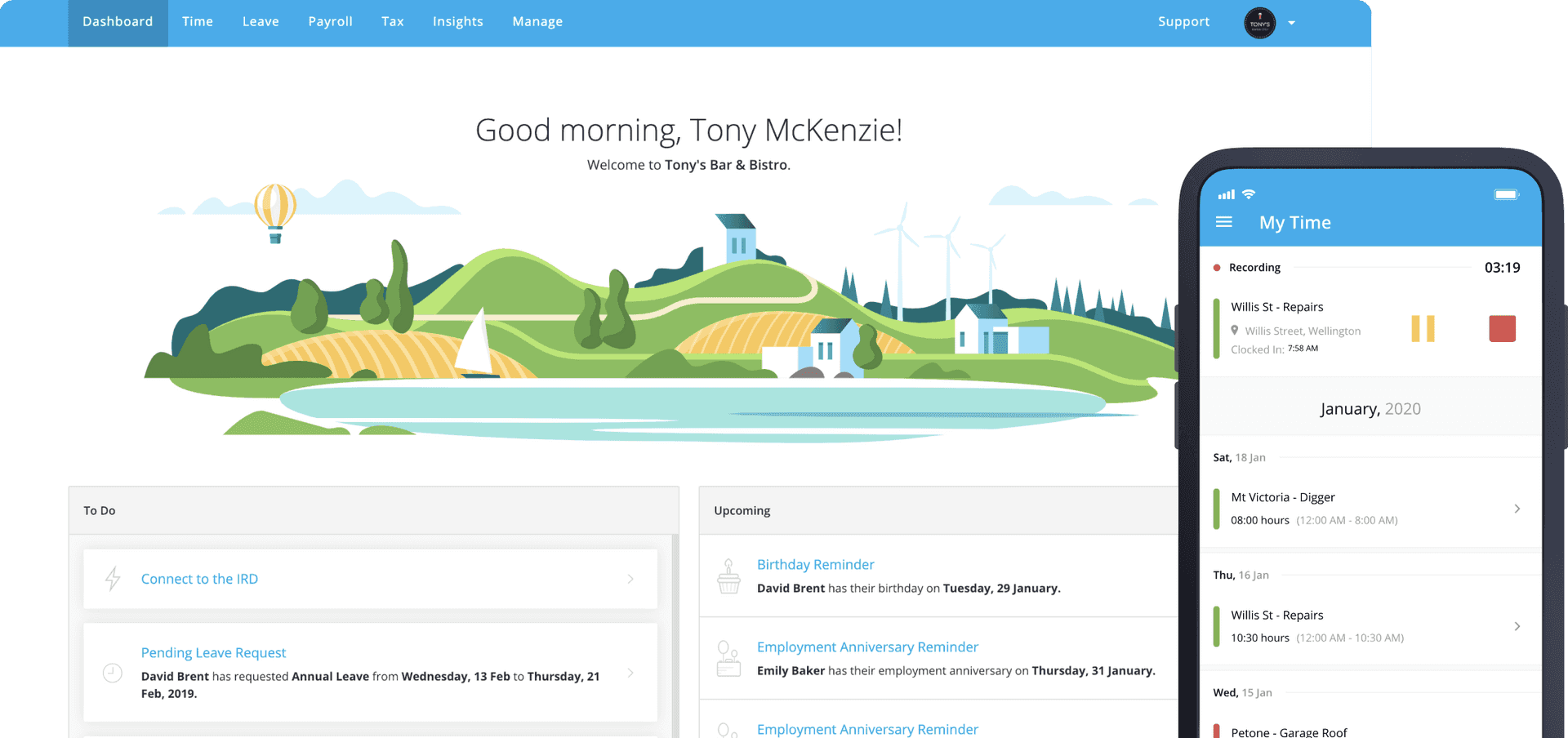Holidays Act
Holidays Act Reform: What’s Been Decided and What It Means for Employers
September 24, 2025
The current Holidays Act has long been criticised as overly complex, creating headaches for employers and employees alike, with numerous high-profile cases of non-compliance.
Now, after years of reviews and consultation, the Government has confirmed the direction of its long-promised overhaul. Cabinet has signed off on major policy decisions, and while the new law isn’t in force yet, we finally have clarity on what’s coming.
When’s it happening?
Not law yet: These are Cabinet policy decisions. The Bill still needs to be drafted, introduced to Parliament and passed.
Target date: Workplace Relations and Safety Minister Brooke van Velden has said her ambition is to have the Employment Leave Bill passed by the end of the current term (late 2026).
Implementation window: Once passed, there will be a 24-month lead-in period before the new law takes effect, giving employers and payroll providers time to adjust.
Key changes at a glance
Annual leave accrual: Leave is earned in hours (0.0769 hours per contracted hour worked), banked in hours, and no longer scales up or down if contracted hours change. Optional 25% cash-up each 12 months.
Sick leave: Also accrues in hours (0.0385 per contracted hour worked), capped at 160 hours. Pro-rated for part-timers, available from day one, and can be taken in part-days.
Casual employees: No accrual of annual or sick leave. Instead, employers pay a 12.5% leave compensation on top of the hourly rate, replacing the old 8% “pay-as-you-go.”
Extra hours: Waged employees get the same 12.5% leave compensation on hours worked above contracted hours. Salaried staff only get this if they’re separately paid for extra hours.
Fixed-term employees: Accrue annual and sick leave from day one, like everyone else.
Public holidays: New “Otherwise Working Day” test for variable hour staff. Clearer rules for part-worked days. Alt hols accrue hour-for-hour for public holidays that are OWDs. Time-and-a-half still applies for hours worked on public holidays.
The detail (for those who need it)
Hours-based accrual for annual leave
Employees will accrue annual leave from day one, in proportion to their contracted hours (0.0769 hours per contracted hour - the equivalent of four weeks for a standard 40-hour worker). Leave is “banked” in hours and no longer scales up/down if someone changes their contracted hours. Employees can also request to cash up 25% of their balance each year.
Sick leave becomes hours-based - and is pro rated for part time workers
Sick leave will also accrue from day one at 0.0385 hours per contracted hour, capped at 160 hours (equivalent to the current 20-day cap). This means that part time workers pro-rata sick leave proportionate to hours actually worked. Workers can take part-days of sick leave (e.g. an hour for an hour they would have worked).
Casuals move to a single compensation payment
For workers with no contracted hours, there’s no accrual of annual or sick leave. Instead, employers pay a 12.5% leave compensation payment on top of ordinary hourly pay each period (shown separately on the pay slip). This replaces the old 8% “pay-as-you-go” approach.
Extra hours attract the same 12.5% (for waged and, in some cases, salaried)
When a waged employee works hours above contracted hours, those extra hours don’t accrue leave. Instead, you pay the 12.5% leave compensation on those hours. For salaried staff, if extra hours are already compensated by salary, nothing further is due; if you also pay additional wages for those hours, the 12.5% applies to those paid-extra hours.
Fixed-term workers accrue leave like everyone else
No more PAYG on short fixed-terms. Fixed-term employees will accrue and be able to take annual and sick leave from day one, based on contracted hours.
One way to pay leave
The reform standardises leave pay: an hourly leave pay rate based on the worker’s base wage for the day of leave (with fixed allowances paid in full; bonuses/variable allowances are not included in the rate).
Public holidays become clearer
New Otherwise Working Day test for variable-hour staff - if the employee worked 50% or more of those days (e.g. Mondays) in recent weeks, it’s treated as an otherwise-working day. Time-and-a-half still applies for hours actually worked on a public holiday. Alternative holidays accrue one hour for every hour worked on a public holiday that is an OWD.
Bereavement & family violence leave
Still days-based, now accessible from day one, and can be taken in part-days.
Parental leave interactions are fixed
Employees continue to accrue leave while on parental leave, and annual leave taken after returning is paid like any other leave (no carve-down).
Accrual during unworked periods is tightened
Annual and sick leave accrue during paid leave (and certain other specified situations), but not during unpaid leave or while only receiving ACC and not working.
Payslips become mandatory
Employers must issue clear pay statements each pay period, itemising pay and leave in a transparent way.
What it means for employers
Expect payroll to switch to hours-based accrual for annual and sick leave.
Budget for the 12.5% leave compensation for casuals and extra hours.
When the time comes, review contracts and policies to ensure they line up with the new entitlements.
Nothing changes in the short term. You’ll need to ensure you’re complying with the current Holidays Act rules until the new Act comes into force.
What it means for employees
Day-one entitlements: Both annual and sick leave start accruing from the first day of employment.
Easier to understand: Part-timers and variable hours staff get sick leave in proportion to the hours they actually work, rather than a flat number of days.
Higher casual rate: 12.5% compensation replaces 8%, meaning casuals get more holiday and sick value in their pay.
Some compensation excluded from leave rates: leave rates will be based on the worker’s base wage and fixed allowances. Bonuses/variable allowances are not included in the rate.
Greater transparency: Payslips must clearly show pay and leave each period.
What PayHero will do
As with all legislation changes, we’ll build the new rules into PayHero and provide clear guidance well ahead of go-live. For now, the current Act still applies - but we’ll keep you updated as the Bill progresses.






